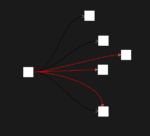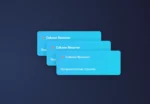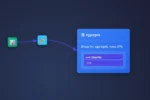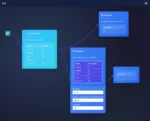In a digital-first world, multimedia is a core foundation of nearly every business-savvy decision—whether you’re streaming high-definition videos, analyzing user-generated photos, or processing audio files for marketing insights, extracting and managing metadata from binary blobs is essential. Metadata enhances searchability, enables targeted analytics, improves user experiences, and even strengthens security and compliance. As businesses grow their reliance on sophisticated multimedia assets, understanding how to engineer smarter multimedia pipelines can give your company a significant competitive edge. Through advanced pipelines, you can rapidly extract precise metadata, enrich your media assets, and stay ahead of industry demands. Let’s explore how you can unlock maximum value by systematically mining the metadata hidden within binary blobs.
Understanding Binary Blobs in Multimedia
Before exploring metadata extraction strategies, it’s crucial to clearly understand binary blobs, or Binary Large Objects. Binary blobs are files that typically contain multimedia data such as images, audio, or video stored in databases or distributed storage systems. Unlike structured textual data, binary blobs don’t inherently reveal insights or information; they require extraction of embedded metadata. Understanding binary blobs is fundamental for designing effective data warehousing solutions, as they often form part of larger analytical pipelines.
Multimedia pipelines process these binary files through automation; they systematically parse through video frames, audio waveforms, photo metadata, and associated file headers. Equipped with high-quality metadata—such as file format, file creation dates, geolocation coordinates, resolution, bitrate, codec information, author information, and licensing details—analytics teams are empowered to build better AI models, enhanced content recommendation platforms, targeted advertising initiatives, and write compliance algorithms tailored to their industry’s regulations and standards.
The complexity of handling multimedia blobs requires specialized skills, from accurately interpreting headers and file properties to dealing with potential anomalies in data structures. Effective multimedia pipelines are agile, capable of handling diverse file types ranging from compressed JPEG images to high-resolution video files, ultimately ensuring better business intelligence and more informed decision-making processes.
Metadata Extraction: Leveraging Automation Effectively
Automation is the cornerstone when it comes to extracting metadata efficiently. Manual extraction of multimedia metadata at scale is unrealistic due to time constraints, human error risks, and high costs. Leveraging automated extraction pipelines allows organizations to rapidly and accurately parse important information from binary files, significantly speeding up downstream analytics and decision-making.
Automated multimedia pipelines can employ advanced scripting, APIs, sophisticated parsing algorithms, and even artificial intelligence to rapidly process large volumes of multimedia data. For instance, employing cloud-based vision APIs or open-source libraries enables automatic extraction of geolocation, timestamps, camera information, and copyrights from images and videos. Similarly, audio files can yield metadata that reveals duration, bit rate, sample rate, encoding format, and even transcription details. These automation-driven insights help businesses tailor their offerings, optimize customer interactions, fulfill compliance requirements, and fuel critical business analytics.
However, not all pipelines are created equal. Ensuring efficient automation requires insightful planning, careful understanding of project requirements and stakeholder expectations, as well as establishing robust debugging and quality assurance measures. Smart automation not only speeds up metadata extraction but also frees resources for innovation, expansion, and strategic thinking.
Best Practices in Multimedia Metadata Extraction
While automation is the foundation of pipeline efficiency, adhering to best practices ensures accuracy, reduces errors, and streamlines operations. Let’s explore several best practices to consider:
Prioritize Metadata Schema Design
Before extraction begins, carefully define metadata schemas or structured data templates. Clearly defining schema ensures uniformity and easier integration into existing analytics frameworks. Consider relevant industry standards and formats when defining schemas, as aligning your metadata structures with widely accepted practices reduces transition friction and enhances compatibility. Partnering with seasoned professionals specializing in multimedia analytics also pays off, ensuring your schema properly supports downstream data warehousing and analysis needs.
Ensure Robust Error Handling and Logging
Errors can creep into automated processes, particularly when dealing with diverse multimedia formats. Implement comprehensive logging mechanisms and clear error diagnostics strategies—your technical team can leverage best-in-class data debugging techniques and tools to quickly identify and correct issues. Robust error-handling capabilities provide confidence in pipeline data quality, saving valuable resources by minimizing manual troubleshooting and potential reprocessing operations.
Optimize Pipelines through Recursive Structures
Multimedia pipelines often involve hierarchical data organization, requiring recursive techniques for smooth extraction. Handling recursive data demands precision, preemptive troubleshooting, and optimization—for details on tackling these challenges, consider exploring our comprehensive article on managing hierarchical data and recursive workloads. Success hinges on agility, smart architecture, and deliberate choices informed by deep technical insight.
Addressing Seasonality and Scalability in Multimedia Pipelines
For businesses that heavily use multimedia content, events seasonal impacts can severely influence processing associated workloads. Multimedia uploads often fluctuate with market trends, special events, or seasonal effects such as holidays or industry-specific peaks. Properly architecting pipelines to handle seasonality effects is crucial, requiring deliberate capacity planning, foresighted algorithmic adaptation, and strategic scaling capabilities.
Cloud architectures, containerization, and scalable microservices are modern solutions often employed to accommodate fluctuating demand. These infrastructure tools can support high-performance ingestion of binary blob metadata during peak times, while also dynamically scaling to save costs during lulls. Businesses that understand these seasonal cycles and leverage adaptable infrastructure outperform competitors by minimizing processing delays or downtimes.
Moreover, considering scalability from the beginning helps avoid costly overhauls or migrations. Proper planning, architecture flexibility, and selecting adaptable frameworks ultimately save substantial technical debt, empowering companies to reinvest resources into innovation, analysis, and strategic initiatives.
Integrating Binary Blob Metadata into Your Data Strategy
Once extracted and cleaned, metadata should contribute directly to your business analytics and data strategy ecosystem. Integrated appropriately, metadata from multimedia pipelines enriches company-wide BI tools, advanced analytics practices, and automated reporting dashboards. Careful integration of metadata aligns with strategic priorities, empowering business decision-makers to tap into deeper insights. Remember that extracting metadata isn’t simply a technical exercise—it’s an essential step to leveraging multimedia as a strategic resource.
Integrating metadata enhances predictive capabilities, targeted marketing initiatives, or user-centered personalization solutions. Particularly in today’s data-driven landscape, the strategic importance of metadata has significantly increased. As you consider expanding your data analytics capability, explore our insights on the growing importance of strategic data analysis to unlock competitive advantages.
Additionally, integrating metadata from binary blobs augments API-driven business services—ranging from advanced recommendation engines to multimedia asset management APIs—further driving innovation and business value. If your team requires support integrating multimedia metadata into quick-turnaround solutions, our article on quick API consulting engagements shares valuable recommendations.
Conclusion: Turning Metadata into Industry-Leading Innovation
Multimedia metadata extraction isn’t merely a nice-to-have feature—it’s a strategic necessity. Empowering pipelines to reliably extract, handle, and integrate metadata from a broad array of binary blobs positions your organization for innovation, clearer analytic processes, and superior marketplace visibility. By thoughtfully embracing automation, error handling, scalability, and integration best practices, you gain a valuable asset that directly informs business intelligence and fosters digital transformation.
Your multimedia strategy becomes more agile and decisive when you view metadata extraction as foundational, not optional. To take your analytics operations and multimedia pipelines to the next level, consider partnering with experts focused on analytics and innovation who can ensure your pipelines are efficient, accurate, and scalable—boosting your position as an industry leader.
Tags: Multimedia Pipelines, Metadata Extraction, Binary Blobs, Automation, Data Analytics, Technical Strategy

























